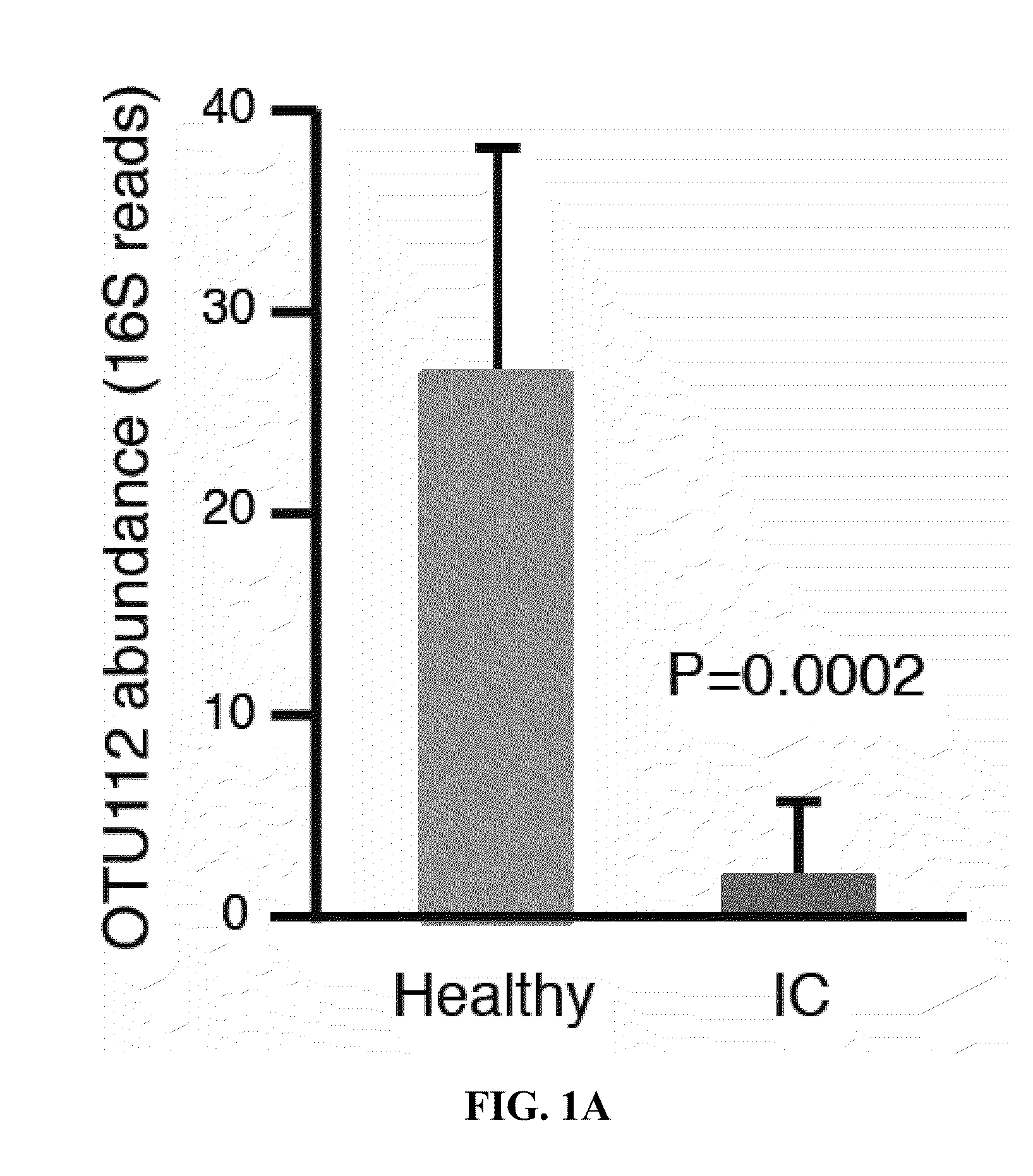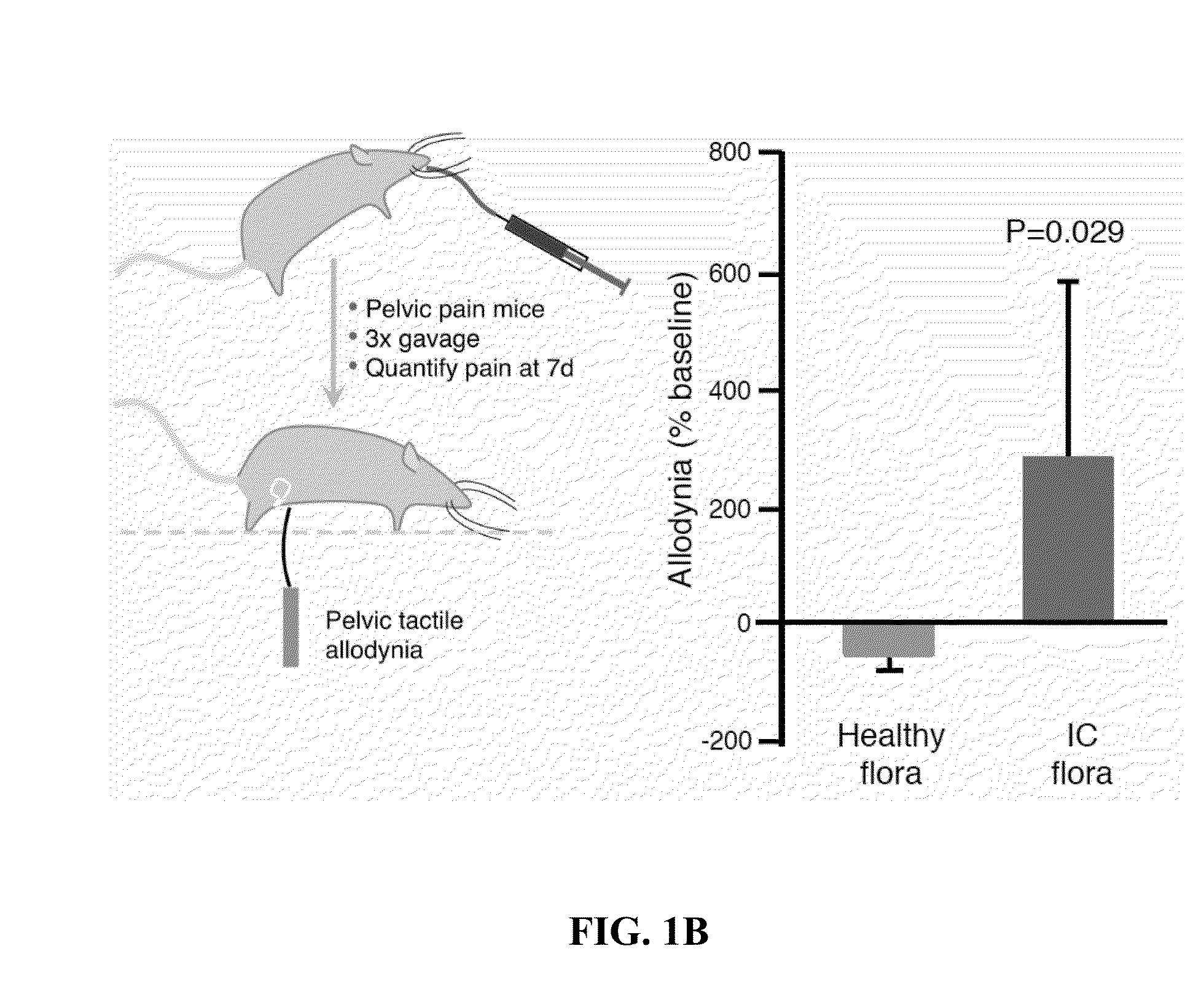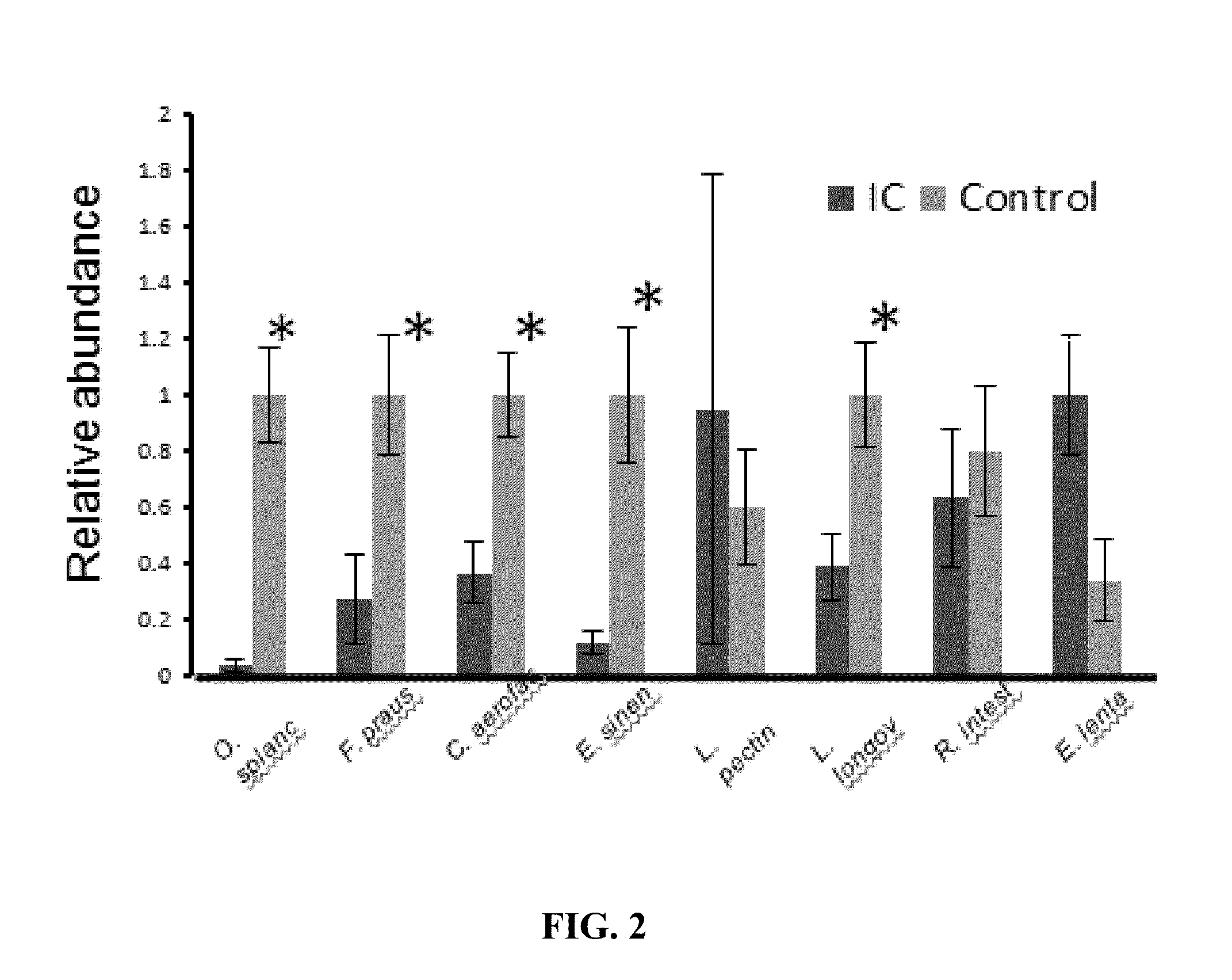Altered microbiome of chronic pelvic pain
- Summary
- Abstract
- Description
- Claims
- Application Information
AI Technical Summary
Benefits of technology
Problems solved by technology
Method used
Image
Examples
example 1
Detection of Reduced Odoribacter in IC Patient Stool Samples
[0026]Stool and vaginal swab samples from female IC patients that were 18-50 years old were tested. 16S rDNA sequencing (MiSeq) was used to identify bacteria in the samples. In stool microbiota, cluster analysis segregated IC patients from healthy controls (HC). Many OTUs (operational taxonomic units) were significantly elevated / reduced in IC patients, relative to controls. Vaginal microbiota did not cluster by pain status. Analyses of stool microbiota revealed OTU112 (Odoribacter) as a taxon significantly reduced in IC patients as shown in FIG. 1A.
[0027]To determine whether stool microbiota modulate pelvic pain, anaerobic cultures of human stool were gavaged into mice in a murine model of chronic pelvic pain. Pain was quantified by assessing tactile allodynia after stool culture administration (3 administrations during 1 week). IC cultures significantly increased pelvic pain relative to healthy stool cultures (n=6-7) as sh...
example 2
Identification of Genera of Bacteria Altered in interstitial cystitis (IC) Patients
[0028]In certain studies, vaginal swabs and / or stool and from MAPP and non-MAPP IC patients and controls, and anaerobic cultures of duplicate samples were banked (n=34). No clear relationships emerged from three vaginal sites. In contrast, Random Forest analyses of operational taxonomic units (OTUs) in stool samples identified the genera of bacteria in Table 1 significantly associated with symptoms, indicating IC patients have altered bowel flora.
TABLE 1
[0029]A sample (e.g., stool sample) from a subject suspected of having IC (e.g., stool sample) can be screened to detect lower or higher levels of one of more of these genera of bacteria, such that a diagnosis of IC or related condition can be made. This allows the patient to be treated appropriately for IC, such as by providing probiotics with the type(s) of bacterial that are, for example, lower in the sample. Samples can be screened by quantitative ...
example 3
Identification of Six Species of Bacteria Altered in interstitial cystitis (IC) Patients
[0030]In certain studies, species-specific primer pairs were developed for each species within certain highly ranked OTUs from ERF analyses. Each primer pair was then tested for amplicon specificity by melt curve analysis of amplification products using a small panel of stool DNAs purified from healthy controls. Primer pairs were used for qPCR of stool DNA from IC patients and controls, and five significant species were identified: O. splanchnicus, F. prausnitzii, C. aerofaciens, E. sinensis, and L. longoviformis (FIG. 2; PR. intestinalis, was also identified as lower in IC patients (see FIG. 2). The primer pairs for these six species are shown in Table 3:
TABLE 3SEQSEQBacterialIDIDSpeciesForward PrimerNO:Reverse PrimerNO:O. splanchnicusTCG AAG GCT TGA CCT 3TTC ATT CGT ACG 4TAC GCTCC GGT GGF. prausnitziiGAG GTT GAA CGG 5ACC TAG TAA ACA 6CCA CAT TGTCG GCC ACC. aerofaciensGTG GAA CAC CGA 7CCT GGT AA...
PUM
| Property | Measurement | Unit |
|---|---|---|
| Level | aaaaa | aaaaa |
Abstract
Description
Claims
Application Information
 Login to View More
Login to View More - R&D
- Intellectual Property
- Life Sciences
- Materials
- Tech Scout
- Unparalleled Data Quality
- Higher Quality Content
- 60% Fewer Hallucinations
Browse by: Latest US Patents, China's latest patents, Technical Efficacy Thesaurus, Application Domain, Technology Topic, Popular Technical Reports.
© 2025 PatSnap. All rights reserved.Legal|Privacy policy|Modern Slavery Act Transparency Statement|Sitemap|About US| Contact US: help@patsnap.com



